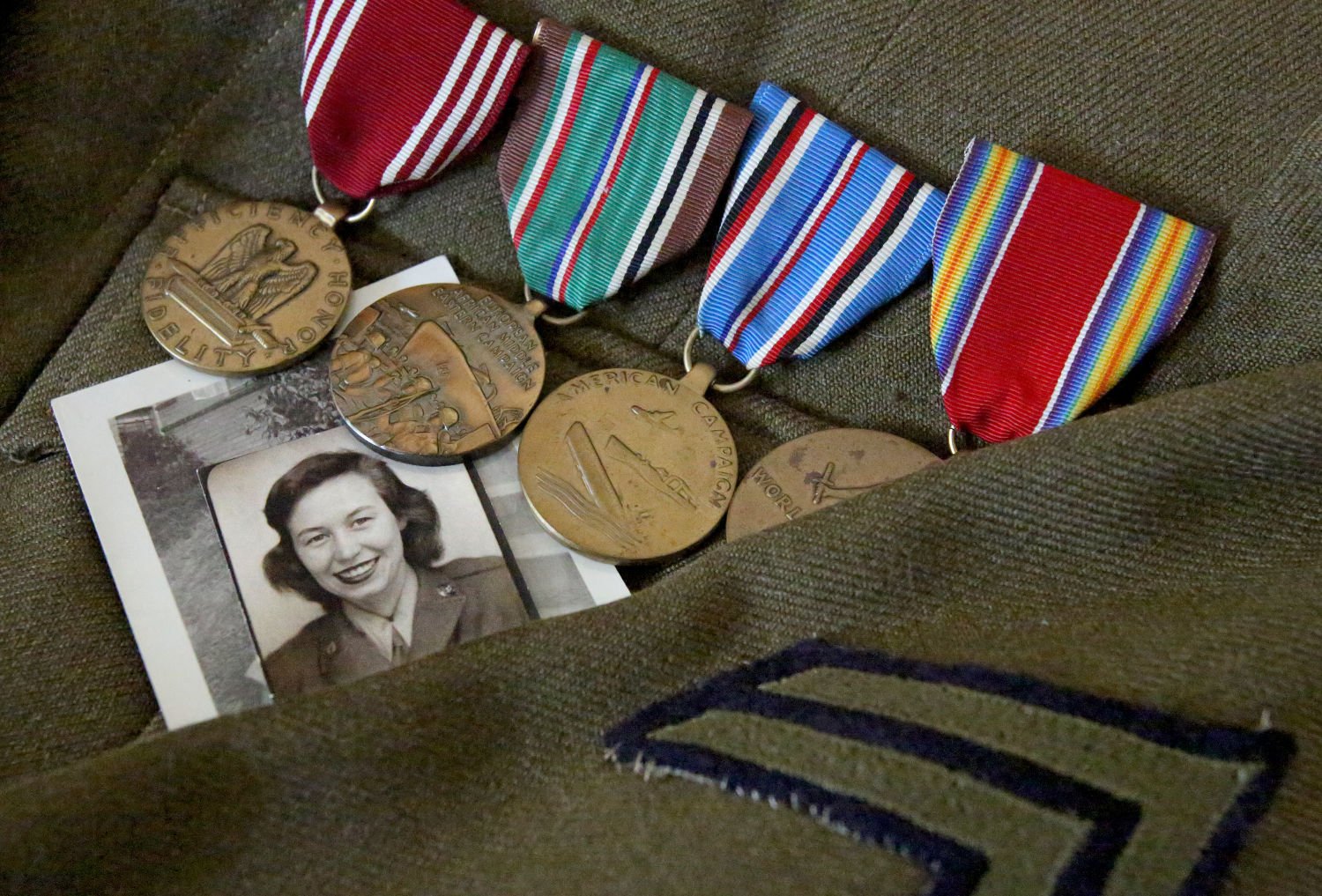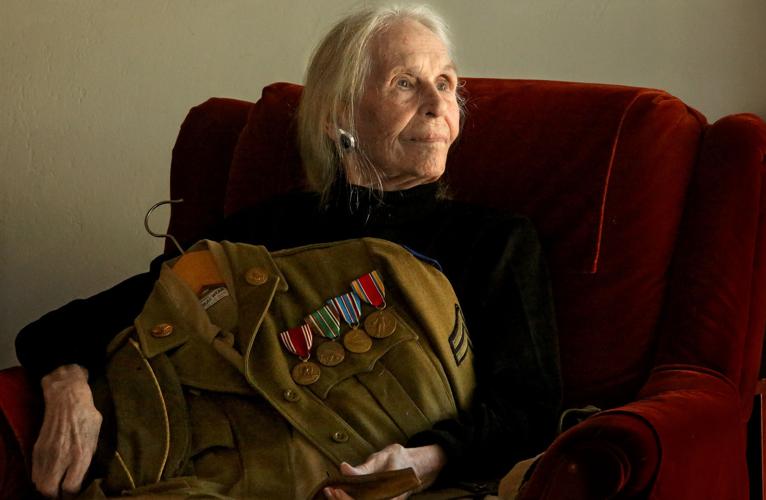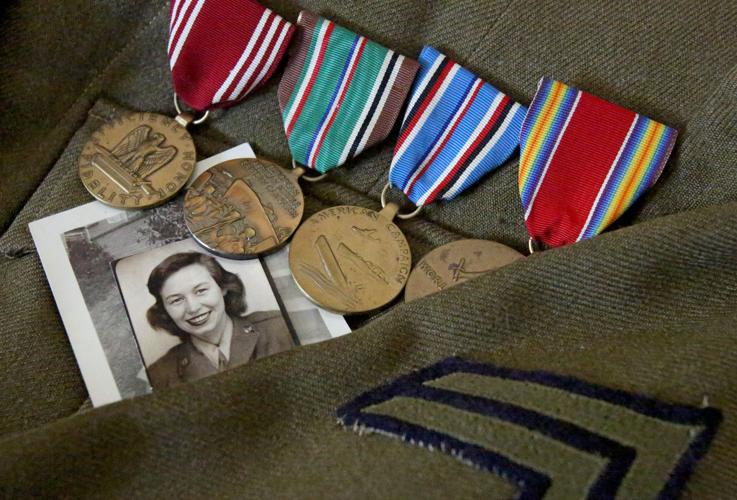Young Mary Congdon wanted an adventure.
“I wanted to go overseas,” she said. And she got an adventure when she joined the Women’s Army Corps in 1944.
She had dropped out of the University of Michigan and was wondering about her future when she saw a recruiting poster for the Women’s Army Corps, which said, “Don’t envy them. Join them.”
So she did. In 1944, she was sent to Fort Des Moines in Iowa and later to England aboard the Queen Elizabeth, an ocean liner that acted as a troop transporter during World War II.
In England and later in France and Germany, she worked as a teletypist, operating electromechanical typewriters used to send messages through telephone or radio relay signals.
That young, adventurous woman soldier is now Mary Stirling, 92. She has carefully kept bits of memorabilia from her World War II days, including her uniform, which her son, Robert “Bruce” Stirling Jr., lovingly described as “moldy.”
 |
Though at 92, she sometimes struggles to find the word she’s looking for, she still remembers a lot, including bicycling through Bushy Park in Hampton, having drinks with “Andre,” a Frenchman who was her “special friend,” at the Long John’s Cafe in St. Germain, and visiting other countries.
But serving overseas during World War II wasn’t just about traveling and learning about foreign cultures.
During battles, soldiers were told that they would have to abandon their equipment and flee. She remembers being told she would have to burn papers and smash the teletypewriters if “push comes to shove.”
There were moments of breakdown, she said. She recalled sitting in the barracks at her post in England. An alarm had gone off about an incoming buzz bomb.
“All I could do was sit on my bed and ask, ‘What am I doing here?’ ” she said.
And one time, during the Battle of the Bulge, a German offensive campaign that happened between December 1944 and January 1945, there was a rumor circulating that there were Nazi soldiers out there dressed as nuns, she said.
Stirling and other WAC personnel were tasked with looking for them, equipped with billie clubs and flashlights. But if they ran into nuns, how could they tell that they were Nazis instead of real nuns?
Combat boots. If the nuns are wearing combat boots, they must not be real nuns. But unfortunately, or fortunately, “We didn’t find any,” she said.
Stirling said she and others coped with the dangers of war by keeping busy at their tasks and comforting. “It was too busy a time” to feel afraid, she said.
Then the war ended in September 1945. Stirling said she was in Paris when she first heard the announcement. Later, she received permission to travel to London, where she said she saw King George VI and his Queen consort celebrate on a balcony.
“Everybody was totally excited,” she said.
She made it home in 1946 and shortly after, married Robert Stirling Sr., a Navy pilot — dark haired and blue-eyed like she always dreamed. Together, they had six children.
“I’m sure my family gets tired of hearing about my war experience,” Stirling said.
But Bruce didn’t think so. “I never get tired of them,” he said.





